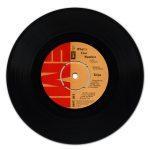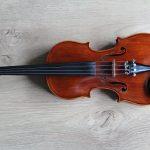Piano Dimensions and size by type
Pianos are available in many types, sizes, and shapes. Each piano has its own unique feature that is suited to suffice the needs and environment of a pianist. What are the different types of pianos and why is a good piano size essential? The sound will determine your choice of piano, but also the size and room it needs. A Piano Dimensions and size guide helps you along the way.

The main category of pianos is acoustic piano and digital piano. Under acoustic we have;
- Horizontal pianos: also known as grand pianos. They create finer tone quality because of the placement of strings and the length they possess. Examples are; baby piano, concert piano, medium grand piano, parlor piano, and ballroom grand piano.
- Vertical pianos: also referred to as upright pianos. Its positioned perpendicularly on the ground because of its height. Moreover, its strings are shorter and the soundboard is smaller compared to grand pianos. Examples are; console piano, studio piano, and spinet piano.
- Digital piano: the sound it produces is very different compared to the other types because it has speakers that relay a recording of an acoustic piano when its sensor is triggered.
All acoustic pianos are either a grand piano or a vertical piano. An imperative matter to keep in mind for choice in the piano is budget, size, and space. While a vertical piano has a compact design and can be placed against a wall the sound quality and enhanced tone of a grand piano are superior.
A vertical piano is 5 feet tall while a grand piano’s length ranges from 5 feet to 9 feet. However, the piano dimensions of a grand piano are greater with longer strings and a larger soundboard therefore the treble and bass tone will blend better producing a pleasing sound.
Related: Guitar Size Chart by Types of Guitars: what size do I need?, Violin Size Chart – What size violin do I need?
Piano Dimensions – Various Kinds of Pianos
Vertical and grand pianos are entailed in a broad variety of sizes. Piano size is a major factor in the quality of music.
Below is a table showing the dimensions of the types of pianos.
| Type of piano | ||||
| Vertical pianos | Height in inches | Height in feet | Width in feet | Width in inches |
| Upright piano | 50 to 60 inches | 4.1 to 5 feet | 5 to 2 feet | 60 to 24 inches |
| Spinet piano | 36 to 40 inches | 3 to 3.3 feet | 5 to 2 feet | 60 to 24 inches |
| Console piano | 40 to 44 inches | 3.3 to 3.6 feet | 5 to 2 feet | 60 to 24 inches |
| Studio piano | 43 to 47 inches | 3.5 to 3.9 feet | 5 to 2 feet | 60 to 24 inches |
| Grand pianos | Height in feet | Height in inches | Width in feet | Width in centimeters |
| Baby grand pianos | 4 ½ to 6 feet | 54 to 72 inches | 5 feet | 60 inches |
| Concert grand | 7 to 9 ½ feet | 84 to 114 inches | 5 feet | 60 inches |
| Medium grand | 5 ½ to 7 ½ feet | 66 to 90 inches | 5 feet | 60 inches |
Digital Piano Dimensions (electric piano size)
How Wide Is A 88-Key Keyboard?
88-keys in a digital piano stand approximately 1600mm wide and 3090mm deep (10-13/16″).
How Wide Is A 66 Key Keyboard?
| Keyboard Size | # of Keys | Width in cm | Width in Inches | Piano Size good for |
|---|---|---|---|---|
| 100% | 88 | 160 cm | 63″ | Pro or amateur players |
| 65% | 66-69 | 104 cm | 41 “ | Beginning Piano players |
| 60% | 58-65 | 96 cm | 38 “ | Children or Starters with no experience |
| 40% | 40-44 | 64 cm | 25 “ | Children |
What is a good Digital Piano size?
Digital pianos come in 3 groups, with 66 keys, 72 keys and 88 keys
- For starters with no experience or children: 66 keyboard numbers
- For beginners: 72-key instrument is sufficient
- For amateurs, pros or people aiming for classical piano: 88 keys
Piano key dimensions.
| Use final caul size | Use intermediate caul size | Key size in inches | Key size in millimeters |
| #6 | #5 | 0.087 inches | 2.21 millimeters |
| #5 | #4 | 0.125 inches | 3.18 millimeters |
| #12 | #4 | 0.129 inches | 3.28 millimeters |
| #10 | #4 | 0.131 inches | 3.33 millimeters |
| #9 | #4 | 0.133 inches | 3.38 millimeters |
| #8 | #7 | 0.137 inches | 3.48 millimeters |
| #2 | #1 | 0.146 inches | 3.71 millimeters |
| #11 | #1 | 0.152 inches | 3.86 millimeters |
| #4 | #3 | 0.162 inches | 4.11 millimeters |
Piano bench dimensions
| Width and height in inches | Width and height in centimeters | |
| For all Grand piano | 33 * 35 inches | 83.8 * 88.9 centimeters |
| For all Upright pianos | 30 * 19 inches | 76.2 * 48.2 centimeters |
| Used by smaller spinet pianos | 25 inches | 63.5 centimeters |

How to choose the right piano-size or dimension
When choosing the right piano there are a number of factors to be considered before purchase.
- First the sound – one can either select a mellower tone or a brighter tone but for a dynamic range use of pedals like damper pedal, soft piano pedal, or center pedal consult a professional piano player.
- Space for a piano – It’s proper to find the exact piano dimensions for it to fit on the designated space because pianos are big.
- Keys and brand – the surface of the keys should be smooth with no cracks and have adequate resistance. A number of brands have earned themselves credibility as famous piano makers, therefore, making themselves a destination for piano shoppers.

The standard size of a piano
An acoustical piano is a preferred model due to its range of sounds and variety in sizes. The standard size used is for the vertical pianos.
The standard upright piano dimensions are 58 inches and 4.8 feet in width, 48 to 60 inches and 4 to 5 feet in height, 24 inches and 2 feet in depth.
In addition, minute differences in size between piano models show more implication in smaller pianos than big ones. Larger pianos have longer strings within the mid-range sections and bass strings that contribute to the tonal quality of musical instruments giving out a beautiful sound. Therefore choosing a larger piano size is more efficient.
Digital or Electric pianos come in all sizes and dimensions depending on the use and needs.
How wide is a piano with 88 keys?
A piano has a minimum of 88 keys, a combination of 52 white or natural keys and 36 black or accidental keys. Most manufacturers give publicity to their pianos by distinctly focusing on two dimensions, by length, if it’s a grand piano, and by height, if it’s for an upright piano, but the width in both the piano remains constant 59 inches, 150 centimeters, and under 5 feet.
The reason why the grand piano differs in length and an upright piano in height is because of the strings’ length and the soundboard size.
Upright pianos have their keys at a right angle with the string and soundboard. In addition, having the biggest soundboard and longer strings produces a rich and excellent sound. A good example is the Yamaha U3 piano that has a height of 52 inches.
While the grand piano has its keys horizontal to the strings and the soundboard, which states they can have longer strings and a larger soundboard. Therefore it’s impossible to make a piano slimmer because it’s a necessity to have 88 keys and elongating the width of a piano has no dissimilarity in sounds or tones of a piano.
Piano Sizes explained
Conclusion
In summary, we have discovered that piano dimensions are a big contributor to the sound quality of different piano types. In addition, the major difference between a grand piano and an upright piano is that one is horizontal and the other is vertical.
Modern pianos are aligned with 88 keys in a row of black and white. The white keys resonate on a C major scale.
Pianos have been in existence since the early 1700s, its invention was by an Italian known as Bartolomeo Christofori. During that time the pianos were quieter and their dynamic range was not that vast.
On the other hand, technical innovations of the keyboard instrument over the years pipe organs development contributed to creating sound pitches for keyboard mechanisms.
Equally important is the shape, design, and size of a piano because that has 12000 non-related components to cater for the six features; bridge, keyboard, strings, damper, soundboard, and hammers also the materials used are for strength and longer life span. The basic component of making a piano is hardwood.
Therefore when you purchase the piano of your choice it’s important to consider the factors listed above.
If you enjoyed reading this article, please feel free to leave a comment below!
Picture in this post by Felicia Buitenwerf on Unsplash






